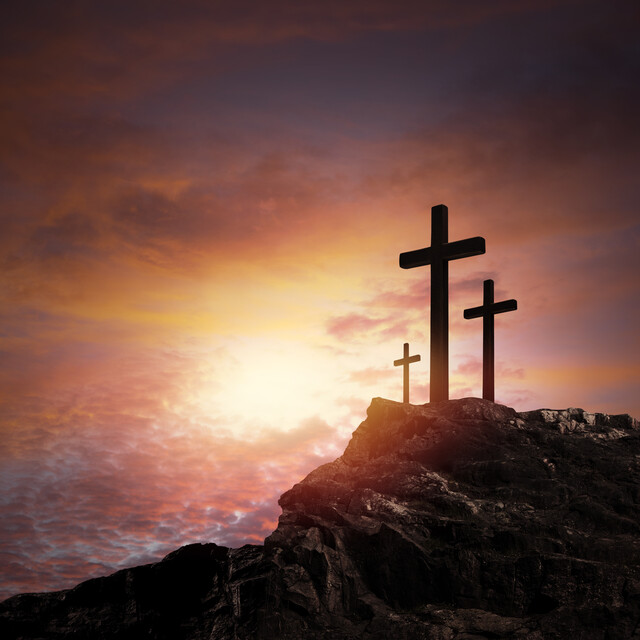Spain is a popular tourist destination for millions of travelers each year. Also a burgeoning finance center, major cities around the country bring business travelers to Spain year round. Spain is also among the most highly developed and stable countries in Western Europe, and as a member of the European Union, offers relative safety to travelers inside her borders.
Like any country around the World, Spain does see some crime. Travelers to any country should be aware of dangerous areas in cities where they're traveling, regardless of the country. As in most countries, common street crimes against tourists may occur in tourist areas. In Spain, cities like Madrid and Barcelona have a slightly higher crime rate than other cities. Visitors, regardless of where they're traveling, should always take steps to prevent muggings or attacks when on a business trip or on vacation.
A few handy tips for business and leisure travelers include the following:
- Keep the fancy watches and jewelry at home.
- Avoid traveling alone, especially at night, whenever possible.
- Stick to well lit, high traffic areas in the city, night or day.
- Exercise caution and remain alert to personal security.
- Carry only limited amounts of cash and one credit card.
- Carry a clean photocopy of your passport on your person. Leave extra credit cards, cash, and any personal documents (including your passport) in your hotel room safe, or request that such items be stored in the hotel's safe during your visit.
- Secure your credit card and cash in a hard-to-reach place (such as in a money belt around your waist).
- Separate your cash and credit card and carry some in a front pocket, some in your wallet, a purse, or backpack. Don't keep all of your valuables and all your cash and credit cards in one backpack, purse, or wallet.
- Separate your money into separate pockets so that you're not pulling out a large wad of cash every time you need to pay for something.
- Don't countersign your traveler's checks until you're ready to cash them.
Before traveling, it's advised that individuals literally empty their wallets of all nonessential items including extra credit cards, Social Security card numbers, library cards, and anything else you routinely carry in your wallet at home that won't be of use to you overseas.
Make two copies of your travel documents, including your passport, driver's license, and airline tickets. Leave one copy with a relative or family friend and carry the others in your suitcase, separate from the original documents, cards or identification.
When walking, women should carry their purse close to the body. Shoulder bags should be worn across the shoulders, with one arm clutching the body of the bag to prevent the opportunity for a pickpocket or thief to rip that bag from your shoulder.
When window shopping or sightseeing, walk close to buildings and stay away from the curb. This prevents passersby or individuals on motorcycles from merely reaching out, snatching your purse, and getting away.
Avoid keeping many of your belongings or valuables in your vehicle while traveling. Theft from vehicles is relatively common in Spain. Items including cameras, laptops, briefcases, and luggage may be stolen from your car if you don't remain alert and vigilant. Always keep the windows rolled up, doors locked and your property and valuables out of sight when driving.
The United States Department of State, Bureau of Consular Affairs offers information on safe travel abroad on their website
The website offers information, tips, and guidance for street safety, safety in your hotel, and safety when using public transportation. Take the time to read through it. If you plan to drive in Spain, follow several handy tips for your safety including:
- Be aware of local driving ordinances.
- Avoid parking your car on streets overnight. Most hotels have parking garages or areas for guest parking. Always choose well-lit areas to park your car.
- Don't pick up hitchhikers (this is common sense, but you'd be amazed how many people continue to do this).
- Stay away from high crime areas, don't drive down alleys or unlit streets if at all possible, and never get out of your car if you are uncertain about the area or about individuals standing nearby.
Keep in mind that it is impossible to guarantee 100% safety when traveling to any foreign country. In Spain, embassies and consulates offices are aware of crimes against tourists and have joined with local authorities to offer warnings and safety tips. Follow warnings and safety tips. Always be aware of your surroundings. Yes, Spain is an incredibly beautiful country, and the people are friendly, but as is true anywhere, you must remain vigilant and aware of your surroundings at all times.
The travel.state.gov website also offers information such as what to take and what to leave behind when traveling abroad. The website also offers advice about the importance of learning local laws and customs, planning an itinerary, and taking care of legal documents before you travel. United States citizens traveling to Spain for business or pleasure should always register their travel plans and travel dates at the State Department's "Smart Traveler and Enrollment Program."
Handy Tips
While not nearly as important as the safety tips above, several other handy tips are important for travelers to Spain. For example, let's talk about toilet paper. As many travelers to Western Europe can attest, the toilet paper in Spain is practically nonexistent, and if you do happen to come across some, (and not to be indelicate) it's as rough as sandpaper. American travelers are used to well-stocked and clean restrooms in restaurants, gas stations, bars, and nightclubs. Don't expect the same in Spain.
To get by this, travelers are encouraged to carry small packets of tissues on their person, or in their purses while traveling throughout Spain. You'll be glad you did. Also be aware that in Spain, many public restrooms have a light switch, but it's on a timer. In many cases, you may have only one minute to take care of business before the light goes out. To get around this, carry a small keychain flashlight or use the illuminated screen on your cell phone to help you along.
When traveling in Spain and other Latin American countries, plan for the traditional siesta in the middle of the afternoon. Except for bars and restaurants, many local businesses, shopping venues, and vendors may be closed throughout most of the afternoon, especially in smaller towns.
Like many other countries today, traveler's checks are not that common anymore. Some vendors will not accept them. The same goes for credit cards. Some vendors, especially in smaller towns, are not equipped to process credit card transactions and may be unwilling to accept traveler's checks. You may be better off cashing traveler's checks as they are needed at American Express offices and banks as you travel. Be aware that many banks may close at two o'clock in the afternoon for siesta.
Remember, once again, to store money in several different places on your person. You might even consider stashing a credit card or extra cash inside your sock on the bottom of your shoe, just in case.
One additional travel tidbit for visitors to Spain is what we'll call, sidewalk etiquette (or lack thereof). In the United States, we're taught to move to the right when meeting someone on the sidewalk. Each person moves to the right and you avoid hitting each other.
In Spain, there is no such rule to live by. Be prepared to stand your ground on the sidewalk, as few people actually veer aside as you walk. This can be quite intimidating for people not used to it, but it is common for people walking a sidewalk in Spain to walk side-by-side, and literally refuse to move out of your way. Speaking of sidewalks and walking in Spain, always make sure that the path is clear before you attempt to cross a street, even in a crosswalk. While pedestrians do have the right-of-way, accidents do happen.
Conclusion
Introduction
We'll talk about some of the most popular Spanish festivals. If your trip should fall on any of these special days or festivals, it's a good idea that you know what to expect. In many countries, festivals are essential to village life and it isn't too hard to find a reason to get out and celebrate.
San Fermin
One of the most significant festivals in Spain takes place in the historic city of Pamplona. Though the festival is known as San Fermin, the most well known event coming from this festival is the running of the bulls. This celebration takes place between midday on July 6th through midnight of July 14th, and the festival is so popular that over a million people travel from around the world to take part in the festivities.
The festival honors San Fermin, the first bishop of Pamplona (beheaded in France), who became a martyr for the Catholic Church. While the events surrounding his exact cause of death is unknown, an alternative version of his final days was that he was dragged to death through the streets of Pamplona after being tied to a bull. While these events would illustrate how the running of the bulls came about, it is likely that this occurred to Saint Saturninus, the bishop responsible for baptizing San Fermin.
Various events take place within the festival, including the opening of the celebration, known as Chupinazo. At 12 noon, a pyrotechnic-type rocket is set off into the air to kick off the festivities. That same day, the Riau-Riau takes place. This portion of the opening festivities marks the procession of city council members as they make their way from the City Hall to a chapel that has been dedicated in San Fermin's honor. The following day, on July 7th, a second procession takes place to honor the saint himself, known as the San Fermin Procession. A statue of the saint is carried through the streets of Pamplona, with thousands of people accompanying the figure.
Most who have heard of this festival know about it through its most famous event, the Running of the Bulls. At eight-o'clock in the morning, a firecracker is set off to signal the release of six bulls and steers from corrals. As it is an extremely dangerous activity to partake in, those who choose to participate visit a statue of the saint and recite a chant for protection. Once a second fireworks is set off to alert the runners that the last bull is out of the corral, the participants begin running down a half-mile street in the historic area of the city. The run does not last long, and the bulls in each daily run throughout the weeklong festivities take part in bullfighting that evening, where they end up being killed in the bullring.
On the last day of the festival, July 14th, the celebration is concluded by candlelight and the singing of the traditional song, Pobre de Mi.
Known as the Holy Week, Semana Santa is Spanish for Easter. As far back as the 16th century, the Catholic Church wanted to tell the story of Christ in a way that everyone could understand, and since the towns were filled with commoners, the best way to illustrate the events was to create a procession to bring to life the events in the final days of Jesus Christ. If you happen to travel to Spain during Semana Santa, the best locations to see the festivities include Malaga and Seville, as these locations are where the most elaborate festivities are held. Other cities hold Holy Week processions, but the activities might vary from location to location.
Commonly, processions take place through the streets with plaster sculptures depicting various events in the final days of Christ's life. Sculptures of the Virgin Mary are included, and often feature facial expressions relating to grief or despair over the death of her Son. The final day of the Holy Week takes place at mass on Easter Sunday. Hoods worn throughout the week are removed, which symbolize the resurrection of Christ after His crucifixion.
Carnival
Similar to Mardi Gras here in the United States before Lent, Carnival takes place in the month of February. The festivities include costumes, masks and various celebrations in the street to prepare for the coming religious observance. One of the most famous occurrences of Carnival takes place in South America, in Rio de Janeiro, Brazil. If you plan to visit Spain during this period of time, the best places to partake in the festivities are Santa Cruz, C �diz, and Las Palmas.
Carnival is known for the thousands of people who take to the streets in celebration, often outfitted in ornate costumes and bright, festive colors. Carnival, which may be synonymous for over-the-top, is very similar toFat Tuesday and related Mardi Gras festivities. In Las Palmas, one of the major destinations for Carnival celebrations, sponsors a well known Drag Queen contest each year, while other locations celebrate by selecting a Carnival Queen and King. Regardless of which city you go to for the Carnival, you'll have a good time.
In Valencia, a very traditional celebration takes place each year. It's known as las Fallas, or the fires. The origin of the festival dates back centuries and began as a day of feasting for the patron saint of carpenters, St. Joseph. Through the centuries, the festival extended to five days and now focuses on creating and destroying wood or plaster statues known as ninot, which translates as dolls or puppets. The outrageously designed ninots are often satirical, so don't be surprised if you find them in the likeness of well known Spanish celebrities or controversial politicians.
Each neighborhood creates a ninot. It can take up to a year to create the enormous puppet. Once the festival is about to start, the ninots are moved into place around the city with cranes in a process known as la plant, or the rising. March 19th is the day in which the burning of the ninots takes place. Early in evening, men go around to the various ninots and cut holes into the plaster statues in order to fill them with fireworks. After the sculptures are filled, the streetlights are dimmed and the ninots are set ablaze. During each festival, one ninot is pardoned, known as the ninot indultat, by way of voting, and then the spared sculpture is placed in the Museum of the Ninot.
Conclusion
The festivals that take place in Spain aren't limited to the celebrations we just illustrated; there are hundreds of events that take place throughout the country each year. Every town or village has its own traditions and festivals, in addition to the most famous times throughout the seasons. Before you visit Spain, check the calendar to see if your visit will fall on the time of any of the celebrations. While we don't suggest that you run with the bulls, seeing one or two of these famous festivals is certainly a once-in-a-lifetime event, especially if you don't know when you'll be back to Spain.
Many people, who travel for work or pleasure, enjoy eating the local foods and enjoying the cuisines of the countries they visit.















